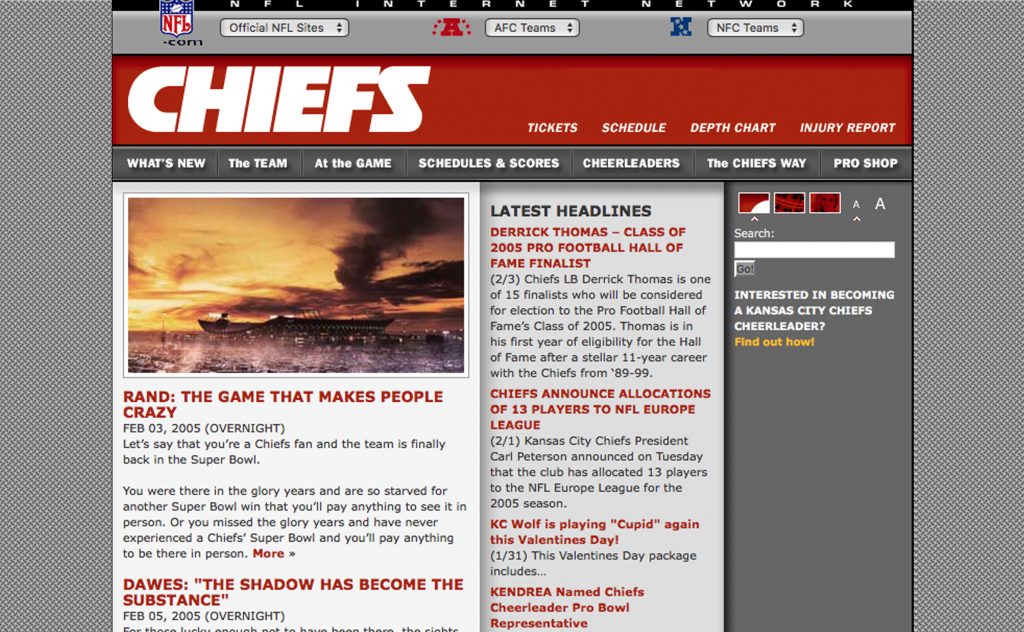Any given Sunday: Redesigning the Kansas City Chiefs site
Top-drawer coach. Winning athletes. Dynamic cheerleaders. Passionately devoted fans. There was a lot to love about the Kansas City Chiefs even before we redesigned the teams site. What the site lacked was a clean, coherent interface and a flexible publishing system tailored to the needs of web, marketing, and content staff. So thats what we created.
Contrast this before shot of the Kansas City Chiefs home page with the same page after our redesign. Among the sites problems were:
- Visual clutter. Too many elements competing for attention. Fans understood and used the website in spite of its drawbacks.
- Confusing navigation. Labels were clear (a good thing) but fly-out menus interfered with usability.
- Old-school, non-standards-based HTML formatting. This wasted user and server bandwidth and made the site less accessible to fans using assistive software (such as screen readers or alternative browsing devices, such as web phones).
We created a clean, clear, strongly branded design based on user needs and team visual attributes. We also used web standards to make the site fast-loading, easy to maintain, and accessible to more browsers and types of devices. The CSS layout was incredibly sophisticated for its day; something other web designers would study while analyzing the techniques. (For instance, they might examine the way multiple levels of navigation are structured in XHTML and presented in CSS.)
We then built a custom publishing system featuring multiple tiers of power and control, depending on the users needs and knowledge. The system was flexible, expandable, and easy to understand and useeven at its most advanced levels. Its intuitive, no-brainer quality freed Chiefs staffers to focus on creating great contentnow easier for Chiefs fans to find and enjoy.
Our responsibilities on this project
Competitive analysis; user needs analysis; graphic design; template production; content management system design and development. Launched 15 September 2004.


